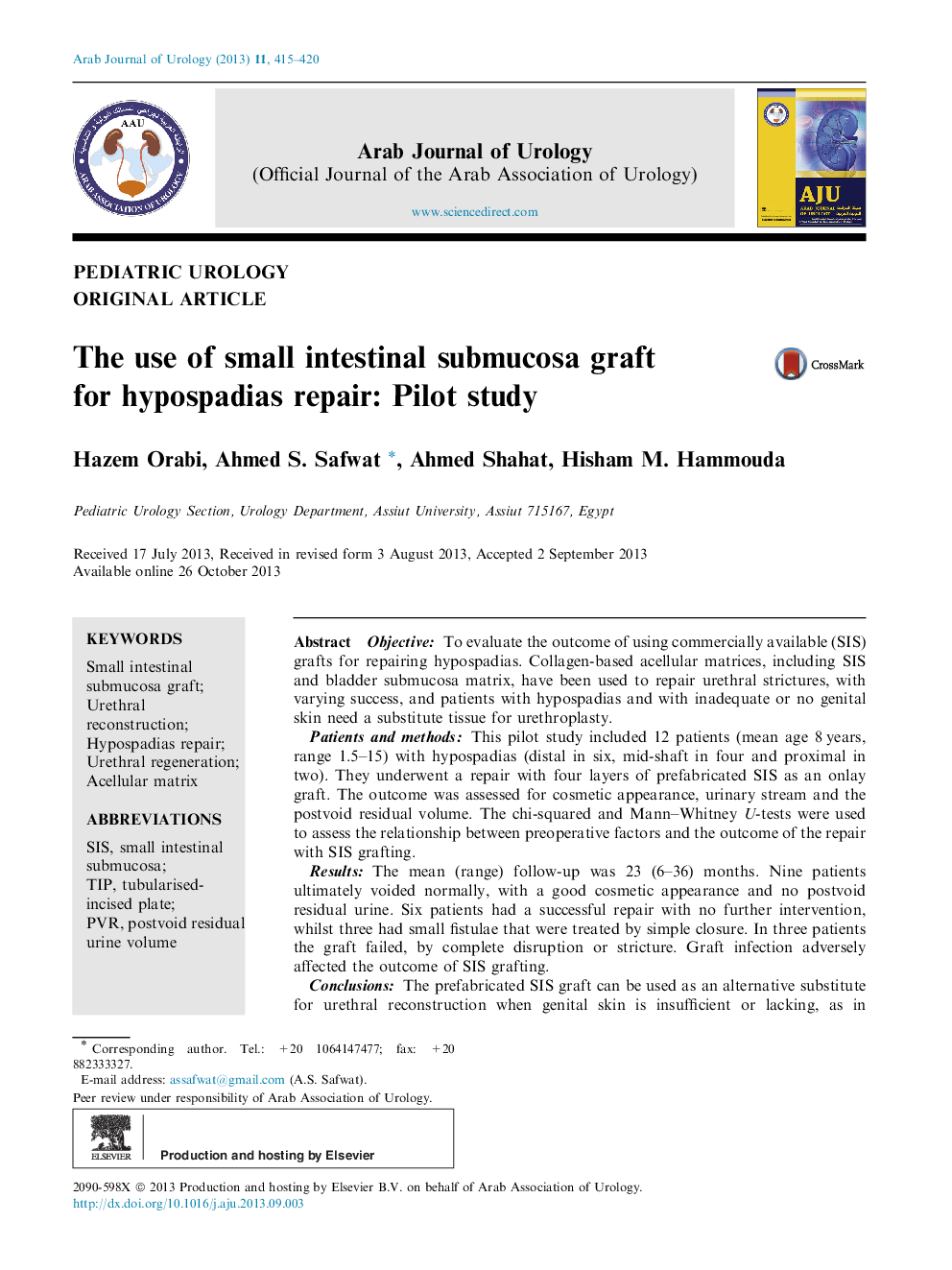| Article ID | Journal | Published Year | Pages | File Type |
|---|---|---|---|---|
| 4268055 | Arab Journal of Urology | 2013 | 6 Pages |
ObjectiveTo evaluate the outcome of using commercially available (SIS) grafts for repairing hypospadias. Collagen-based acellular matrices, including SIS and bladder submucosa matrix, have been used to repair urethral strictures, with varying success, and patients with hypospadias and with inadequate or no genital skin need a substitute tissue for urethroplasty.Patients and methodsThis pilot study included 12 patients (mean age 8 years, range 1.5–15) with hypospadias (distal in six, mid-shaft in four and proximal in two). They underwent a repair with four layers of prefabricated SIS as an onlay graft. The outcome was assessed for cosmetic appearance, urinary stream and the postvoid residual volume. The chi-squared and Mann–Whitney U-tests were used to assess the relationship between preoperative factors and the outcome of the repair with SIS grafting.ResultsThe mean (range) follow-up was 23 (6–36) months. Nine patients ultimately voided normally, with a good cosmetic appearance and no postvoid residual urine. Six patients had a successful repair with no further intervention, whilst three had small fistulae that were treated by simple closure. In three patients the graft failed, by complete disruption or stricture. Graft infection adversely affected the outcome of SIS grafting.ConclusionsThe prefabricated SIS graft can be used as an alternative substitute for urethral reconstruction when genital skin is insufficient or lacking, as in circumcised patients or a repeat hypospadias repair. Graft infection is the chief reason for graft failure and should be prevented. Further studies with more patients are needed to confirm these preliminary results.
